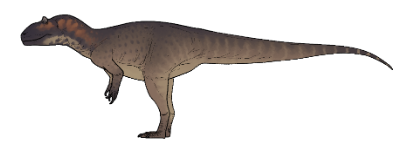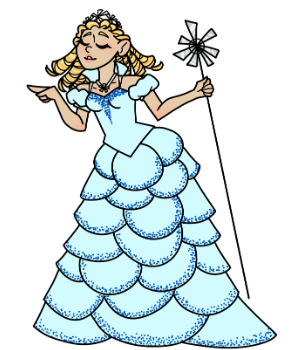Kathe Kollwitz is one of my favorite artists of all time. Käthe
Kollwitz, née Schmidt was born in Königsberg on July 8th, 1867.
She was the fifth child of Carl Schmidt and Katharina Schmidt, née
Rupp. She is a German artist often known for her woodcuts, she
also did etching, painting, sculpting, printmaking, and more.
Kathe’s father started to recognize her talent at a very young
age. Although it was not common for females to be successors, he
decided to break the mold and put Kathe in lessons. It was thanks
to his open mind that she was able to get the training she had.
Her father signed her up for her first art lessons in Königsberg
with the painter Gustav Naujok and the copperplate engraver Rudolf
Mauer. She studied under these artists for five years. In 1886, she
Kollwitz, née Schmidt was born in Königsberg on July 8th, 1867.
She was the fifth child of Carl Schmidt and Katharina Schmidt, née
Rupp. She is a German artist often known for her woodcuts, she
also did etching, painting, sculpting, printmaking, and more.
Kathe’s father started to recognize her talent at a very young
age. Although it was not common for females to be successors, he
decided to break the mold and put Kathe in lessons. It was thanks
to his open mind that she was able to get the training she had.
Her father signed her up for her first art lessons in Königsberg
with the painter Gustav Naujok and the copperplate engraver Rudolf
Mauer. She studied under these artists for five years. In 1886, she
traveled to Engadine, where she met Gerhart Hauptmann and Arno
Holz, two naturalistic writers. These two piqued her interest in this
form of art.
After she came back from her trip, she enrolled in a painting
class for portrait studies at the Berlin Academy for Women Artists.
She studied under Karl Stauffer, who introduced Kathe to Max
Klinger’s etching series, Ein Leben. Ein Leben is a series she drew
much inspiration from. In 1887, she took painting lessons from Emil
Meide, who had a focus on historical subject matter.
In 1888, she enrolled in nude painting classes at The Academy
of Women’s Arts, where she was able to study live models and
human anatomy. Around this time, Kathe began to develop a large
interest in the naturalist plein and women’s rights. She started to
explore her own way of art and expand on gender issues.
She would intentionally depict working-class life in everyday
situations. It was later explained that her inspiration for this subject
came from Max Klinger’s essay on art theory, Malerei und
Zeichnung (painting and drawing). This essay strengthened her
desire to explore representations of the negative side of life and
furthered her desire to create graphic art.
In 1891, Kathe married Dr. Karl Kollwitz. These two were
humble people and wanted a simplistic lifestyle, so they moved into
a small flat where they would live for the next 50 years, until the
summer of 1943. They had two children, Hans Kollwitz (1892-1971)
and Peter Kollwitz (1896-1914).
Kathe’s son, Peter, was a volunteer in Belgium during the first
outbreak of World War 1. Peter was unfortunately killed shortly after
at the young age of 18. This was devastating for Kathe. She
form of art.
After she came back from her trip, she enrolled in a painting
class for portrait studies at the Berlin Academy for Women Artists.
She studied under Karl Stauffer, who introduced Kathe to Max
Klinger’s etching series, Ein Leben. Ein Leben is a series she drew
much inspiration from. In 1887, she took painting lessons from Emil
Meide, who had a focus on historical subject matter.
In 1888, she enrolled in nude painting classes at The Academy
of Women’s Arts, where she was able to study live models and
human anatomy. Around this time, Kathe began to develop a large
interest in the naturalist plein and women’s rights. She started to
explore her own way of art and expand on gender issues.
She would intentionally depict working-class life in everyday
situations. It was later explained that her inspiration for this subject
came from Max Klinger’s essay on art theory, Malerei und
Zeichnung (painting and drawing). This essay strengthened her
desire to explore representations of the negative side of life and
furthered her desire to create graphic art.
In 1891, Kathe married Dr. Karl Kollwitz. These two were
humble people and wanted a simplistic lifestyle, so they moved into
a small flat where they would live for the next 50 years, until the
summer of 1943. They had two children, Hans Kollwitz (1892-1971)
and Peter Kollwitz (1896-1914).
Kathe’s son, Peter, was a volunteer in Belgium during the first
outbreak of World War 1. Peter was unfortunately killed shortly after
at the young age of 18. This was devastating for Kathe. She
expressed her grief for the loss of her son through her art. She
made woodcuts of the fallen soldiers and depictions with her and
her son.
These series blew the world away. She was able to convey
grief in such a devastating way. She did these works as woodcuts,
and the way she used the grain of the wood combined with the
expression of these people was breathtaking. You can truly feel the
grief she felt.
During this time, Kathe Kollwitz became a pacifist. The
devastation of losing her son, combined with her desire for a better
world, created some of her most moving works. She created many
anti-war pieces, but they were different from what you may picture.
She focused on the people and the way they were being affected.
She showed what it is like to be struggling behind the scenes. She
wanted to tap into people’s emotions and show the true effect of the
world’s actions.
Kathe Kollwitz is one of my favorite artists because she shows
things how they are. She strips back the layers and reveals what
many people are too afraid to reveal. I think the way she peeled
back the layers is also why she was such a success in her anti-war
works. While other people focus on what is right in front of them, like
works showing their hatred for the government or depictions of
people fighting, Kathe shows the people at home, the working class.
I think this was able to hit the world in a different way.
Not only was she an amazing artist, she was also an amazing
person. She dedicated her life to helping others. She spent the last
of her years doing all she could to better the world, and her husband
was the same. Dr. Karl Kollwitz was an extremely well-educated
doctor who could have made a lot of money, but he would take
her son.
These series blew the world away. She was able to convey
grief in such a devastating way. She did these works as woodcuts,
and the way she used the grain of the wood combined with the
expression of these people was breathtaking. You can truly feel the
grief she felt.
During this time, Kathe Kollwitz became a pacifist. The
devastation of losing her son, combined with her desire for a better
world, created some of her most moving works. She created many
anti-war pieces, but they were different from what you may picture.
She focused on the people and the way they were being affected.
She showed what it is like to be struggling behind the scenes. She
wanted to tap into people’s emotions and show the true effect of the
world’s actions.
Kathe Kollwitz is one of my favorite artists because she shows
things how they are. She strips back the layers and reveals what
many people are too afraid to reveal. I think the way she peeled
back the layers is also why she was such a success in her anti-war
works. While other people focus on what is right in front of them, like
works showing their hatred for the government or depictions of
people fighting, Kathe shows the people at home, the working class.
I think this was able to hit the world in a different way.
Not only was she an amazing artist, she was also an amazing
person. She dedicated her life to helping others. She spent the last
of her years doing all she could to better the world, and her husband
was the same. Dr. Karl Kollwitz was an extremely well-educated
doctor who could have made a lot of money, but he would take
hundreds of patients in for free. Whether it was because they could
not afford it or because Germany’s government would refuse to
treat them, he did not care. He believed everyone should be taken
care of.
I hope you can see the life and works of Kathe Kollwitz as
inspiration. She did what she loved and made a difference. If we all
had a little bit of this brilliant women’s mindset, the world would be a
better place.
treat them, he did not care. He believed everyone should be taken
care of.
I hope you can see the life and works of Kathe Kollwitz as
inspiration. She did what she loved and made a difference. If we all
had a little bit of this brilliant women’s mindset, the world would be a
better place.
hundreds of patients in for free. Whether it was because they could
not afford it or because Germany’s government would refuse to
treat them, he did not care. He believed everyone should be taken
care of.
I hope you can see the life and works of Kathe Kollwitz as
inspiration. She did what she loved and made a difference. If we all
had a little bit of this brilliant women’s mindset, the world would be a
better place.



























